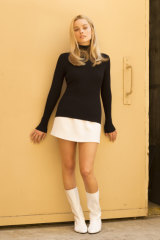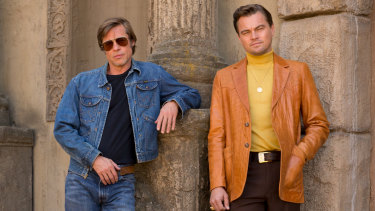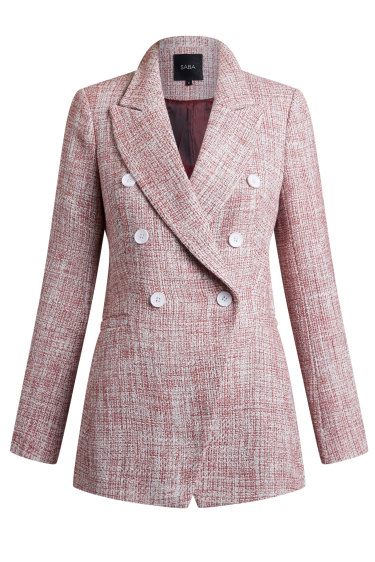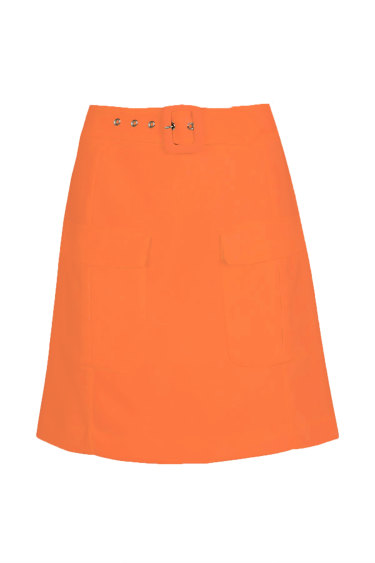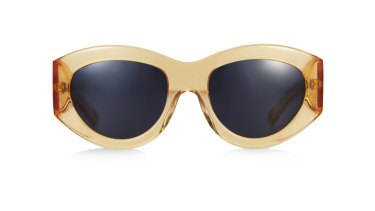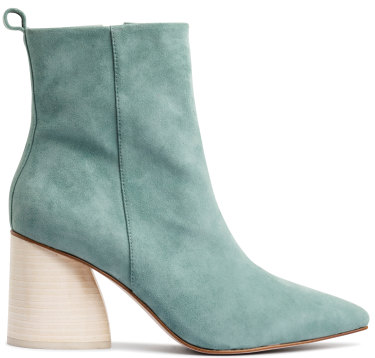Margot Robbie as Sharon Tate, who was a style icon before her untimely death in 1969.
I spent most of last weekend reading about murder.
After seeing Quentin Tarantino's new film, Once Upon a Time in Hollywood, I had a lot of questions. And, because I don't wish to give too much away, I will only say that I spent the following day consuming podcasts and articles about Charles Manson and the studio system, a world Tarantino recreates in the film starring Brad Pitt, Leonardo DiCaprio and Margot Robbie, who plays the ill-fated actress Sharon Tate.
So what does any of this have to do with fashion?
The film's release, 50 years to the month after Tate's murder at the hands of the Manson "Family", is one of the catalysts for a fresh interest in '60s fashion.
CR Fashion Book called the film a "love letter" to Tate, with Robbie wearing pieces of jewellery from Tate's estate lent by her sister, who acted as a consultant on the film. (Tarantino also agreed to delay the film's premiere to a week after the anniversary at the family's request.)
And yet it's controversial because, as some commentators have pointed out, it implies the gruesome murder of a woman and her unborn child (Tate was pregnant at the time) is something to be exploited for fashion's gain.
As Siobhan Duck wrote for this newspaper recently: "Apparently, we were meant to ponder the heartless killing of Sharon Tate and her unborn child, then race to fill our wardrobes with miniskirts and platform shoes."
Let's be clear: murder, or any violence against women, is never acceptable.
So, what does fashion do in this situation: do we simply ignore the obvious '60s trend points, from white boots to hoop earrings? Or, given the world is also marking 50 years since Woodstock and the first moon landing, do we reframe it as inspiration from a time, rather than a particular individual?
Arianne Phillips, costume designer in Once Upon a Time, said 1969 represented "a time of change – you could see it reflected in the way people dressed and wore their hair".
Brad Pitt and Leonardo DiCaprio star in Once Upon a Time In Hollywood.Credit:Sony
"Miniskirts, denim, young people were demonstrating the war … hippie fashion was coming into its own, peasant tops, flares, people walked barefoot," Phillips said of the era portrayed in the film.
Phillips, who was an inaugural member of the Time's Up movement and designed its famous logo, said there are many parallels between the politics and social mores of the late '60s and now.
"We are also in a changing time, we are in the middle of a digital technology revolution," she said. "People express themselves how they dress, similar to 1969 we also see what 'tribes' people identify with by their chosen dress.
"Part of the conversation now is around identity politics and gender, which I see as an extension and evolution of the conversation started in the late '60s in regard to freedom of expression, women's liberation, gay liberation and sexual revolution."
So which aspects of 1960s' fashion does Phillips think will take off? As she told Vogue: "What the public grabs onto is a mystery to me but … I look forward to seeing what happens.”
Once Upon a Time in Hollywood is out on August 15.
Get the look
Feathers, $300Credit:feathers.com.au
Saba, $399Credit:saba.com.au
Coop, $169Credit:trelisecooper.com
Holly Ryan x Pared, $260Credit:paredeyewear.com; hollyryan.com.au
Mi Piaci, $320Credit:mipiaci.com.au
Source: Read Full Article
